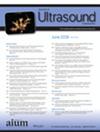Transthoracic Ultrasound to Predict Exudative Pleural Effusion Etiology
Abstract
Objectives
Pleural effusions often require invasive sampling to establish underlying etiologies. Transthoracic ultrasound (TUS) has shown promise in the diagnostics of pleural effusions; however, there lacks consensus regarding its clinical application. We evaluated the diagnostic utility of specific TUS findings for exudative effusions, specifically complex parapneumonic effusion and empyema.
Methods
Ultrasound-guided pleural effusion drainage cases were retrospectively reviewed at a single university-based medical center from July 2015 to May 2023. Procedure-related images were reviewed for specific ultrasound findings: anechoic, fibrin, septation, loculation, plankton/swirl sign, hematocrit sign, jellyfish sign, and visceral pleura thickening. Exudative or transudative nature, underlying etiology, and other patient data were collected from chart review. Sensitivity, specificity, positive predictive value (PPV), negative predictive value (NPV), and positive likelihood ratio (LR+) were calculated for these findings, either individually or in combination, to predict nature and specific etiology for pleural effusion. A multivariable logistic regression model was constructed to analyze the association between TUS findings and complicated parapneumonic effusion and empyema.
Results
A total of 389 cases included, 252 (64.8%) were exudative and 137 (35.2%) were transudative effusions. Findings of anechoic and jellyfish sign were more common in the transudative group, while septation, loculation, and pleural thickening appeared more commonly in exudative effusion (P < 0.05). Absence of all three signs of fibrin, septation, and loculation had 83% sensitivity (95% CI 77–90) and 78% NPV (95% CI 70–86) for transudative effusion. Septation and loculation had 98% specificity (95% CI 95–100) and 94% PPV (95% CI 88–100) for exudative effusion. Fibrin, loculation, and septation, when found concurrently, had 99% specificity (95% CI 98–100) and 96% PPV (95% CI 88–100) for exudative effusion. Multivariable logistic regression showed the presence of septation (odds ratio [OR] 5.3, 95% CI 1.7–16.3, P = 0.0038) and loculation (OR 3.3, 95% CI 1.1–10.0, P = 0.0327) were each independently associated with the likelihood of complicated parapneumonic and empyema cases.
Conclusions
TUS features of loculation or septation are specific and predictive for exudative pleural effusion. The presence of septation and loculation was each associated with a higher likelihood of complicated parapneumonic effusion or empyema. Further studies are needed to validate diagnostic models that incorporate both TUS and clinical features to predict the nature and etiology of pleural effusions.

 求助内容:
求助内容: 应助结果提醒方式:
应助结果提醒方式:


